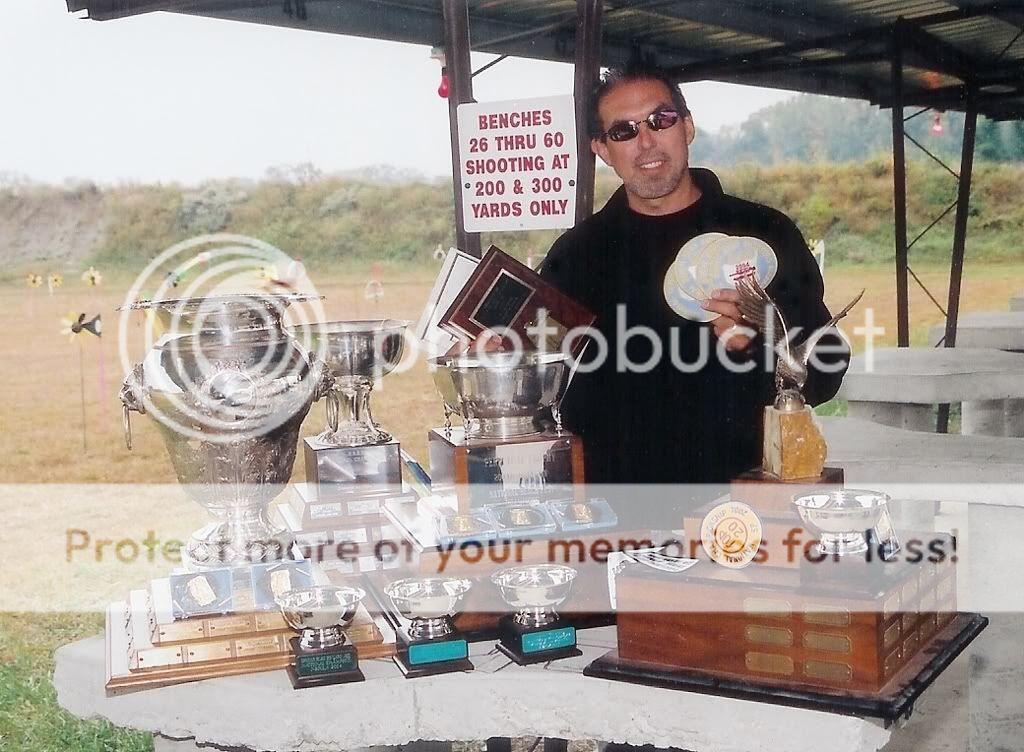Mikecr
Well-Known Member
That's right Richard, and this is also where much of the notions about uniformity 'provided' by FL sizing falls apart.Conversely, you should be able to get the same pressure/velocity from a necksized load with a slight increase in powder. ...similar to the whole freebore issue.
As Gary eluded, fired cases go to the expanded chamber(greater than cold chamber) dimensions and spring back. When brass has not expanded so far as to yield, it springs back fully. When brass does expand to yield, it does not spring back fully, but to a new balance in dimensions. This is what new brass does no matter what.
That chamber does spring back fully(or you've got a serious problem), so an interference fit is soon left with high pressure loads, leading to the need to counter with base body sizing, and/or opening the back of the chamber for ease of extraction.
This is an issue even with normal/warmish loads for cartridges that don't account for it with reduced body taper, steeper shoulder angles, and coaxial necks. This gets anyone to flat out FL sizing, as implicated by resulting need for trimming.
Fireforming IS sizing. Spring back IS ALWAYS a part of sizing. And yielding cases, which are changing in spring back, are changing in capacity as well. No getting around it.
Now add to this a FL sizing counter for it, with more spring backs, and probability of matching capacities and low runout drops with each cycle.
This murmur of FL sizing cases being the only avenue to uniform cases, often stands without qualifications otherwise. Wildcat/competitive cases and chambers can be utilized with far less need for sizing. Even to a point of ZERO sizing -ever.
I have a 6.5wssm imp chambered in all aspects fitted. I run loads below SAAMI max, and MY max, which gets me easily to 3200fps with 140vlds. But my 28" barrel tune is at 3040fps, which would be ballistically competitive with these bullets.
My brass did not first see a sizing die until the eighth reload, where I began bumping only with a custom body die. At ~20th reload I added tension tweaking of the load via partial NS with a custom Wilson. But other than shoulders, and my fiddling, these cases could live eternal with no base-body sizing. Had I gone to 45-60deg shoulders(I'm at 35deg), I might have mitigated bumping.
I'll go there, and turn a bit thicker necks(but still fitted), with the next barrel.
I hate bumping..
My cases here still match in capacity, and they are not growing, after 30+ reloads.
This gun will never be a 6ppc or even a 30br,, it's a 16.5lb Williamsport LG, but it is reliable for 1/4moa as far as I've been using it. It has potential at 1kyd, if only I had the time/resources.
Now I know 1/4moa is commonly reached with much easier paths, including FL sizing. But I'm learning there are multiple paths, and that nothing considered with sizing stands as true without qualifiers.
Bart, one thing not mentioned by Gary is that expanding cases do so from case mouth first, to neck-shoulder, to shoulder-body, to body and finally base-body. It truly is inverse FL sizing.
And as mentioned, much of it happens before the bullet even moves.
I don't have a chamber-cam to see it, but have read about it and seen that it passes all tests so far. Anyway, this could either complicate or simplify any mental model of bullet alignment with firing. Much as runout does..
I do know that bolt lugs out of square lead to detriment in accuracy.

